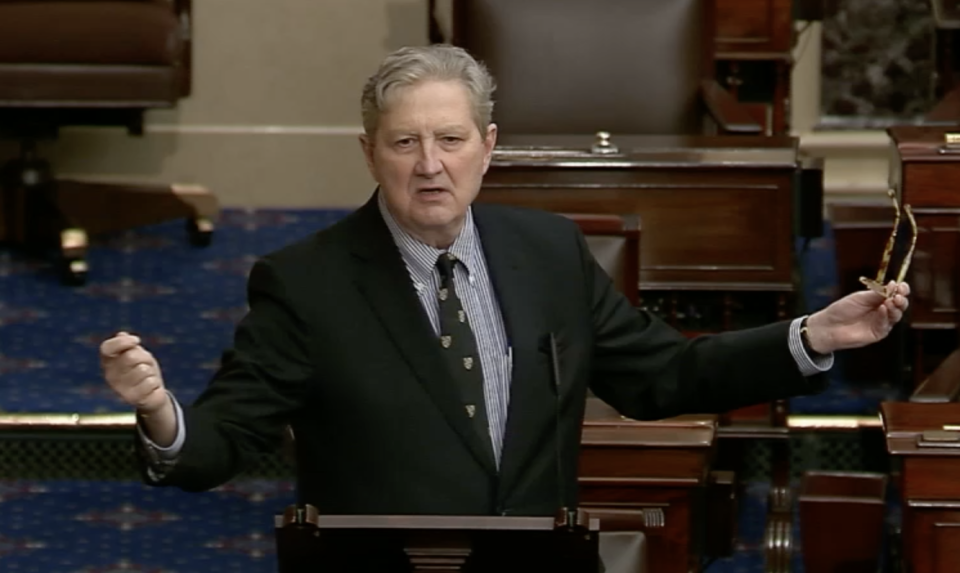"Nunsensations!" (Westwego)
March 2, 2010
Woman found dead, TPSO awaiting cause
March 4, 2010Efforts to complete the second phase of the Louisiana Highway 1 project, or LA 1, are moving forward, despite being denied a $300 million grant from the U.S. Department of Transportation.
The LA 1 Coalition – an area non-profit group hinged on making the project a success – put in their bid to receive the money last September. The grant was part of the $1.5 billion Transportation Investment Generating Economic Recovery Grant Program called TIGER.
While the roadway provides access to the state’s largest industries – oil and gas – it also serves as an evacuation route for thousands of people during hurricane season. Bouts of flooding and heavy traffic have caused the highway to deteriorate, posing major safety concerns for motorists.
Highway 1 is also included in the National Highway System (NHS), which comprises roughly 4 percent of the nation’s highways.
Most routes included in the NHS are considered vital elements of the country’s transportation system.
If the application were approved, the coalition would have used a large portion of the money to construct an 8.3-mile two-lane elevated highway from the Tomey Doucet Bridge that was completed during phase one of the project, to Golden Meadow.
“This section of the highway is outside of levee protection and is extremely vulnerable to washout and flooding,” explained Henri Boulet, executive director of the LA 1 Coalition.
“The LA 1 grant application focused on the critical role that the highway corridor plays in this nation’s energy security and the tremendous local and state support that the project has garnered over the past decade,” said a news release issued by the coalition in February.
About 16 to 18 percent of the nation’s domestic oil and natural gas supply stem from the Gulf of Mexico, home to Port Fourchon in south Lafourche Parish. Highway 1 is the only roadway that allows access from the port to the rest of Louisiana. The roadway also provides critical access to Louisiana’s Offshore Oil Port (LOOP), which allows oversized tankers to offload 18 miles off coast.
LOOP handles 14 percent of the nation’s crude oil, as five of its pipelines are connected to about 50 percent of the United States’ refining capacity, according to documents on the LA 1 Coalition’s Web site.
The offshore setup also serves a central role in importing oil from other countries, receiving an estimated 14 percent of the nation’s imported crude oil per year.
Unfortunately, the largest grant awarded by the DOT was $105 million, about two times lower than the amount needed to complete the next phase of construction.
“It is clear to me that a decision was made by the Department of Transportation to spread the money across the country versus focusing on large significant projects such as LA 1,” added Boulet. “We do not view the TIGER grant results as condemnation of the LA 1 project. Rather, this is simply a result of current political and economic realities.
“We were very disappointed by the decision,” he added.
All indicators said money would be awarded to projects based on their national significance, said the director.
“And there’s no other road in America that provides 18 percent of the nation’s energy.”
However, the rejection hasn’t deterred the coalition from seeking more federal funds and a federal appropriations bill signed by President Obama awarded the group nearly $1 million in the latter part of 2009.
Over the next two weeks, the coalition will be in Washington trying to determine where additional funds can be gathered, said Boulet. Currently, “…we are in contact with the Louisiana Department of Transportation to identify possible sources of federal funding.”
One major source could be federal stimulus money, noted the director.
Geotechnical field investigations and rights-of-way acquisitions are currently underway on phase two of the project.
Unlike bridges of the past – or elevated highways – pilings now reach depths of between 120 and 130 feet.
These new regulations ensure designs can withstand 100 years of storm surge, explained Boulet. Before that can happen, surveyors must probe the ground and analyze the different layers of soil.
When actual construction will continue is unknown.









